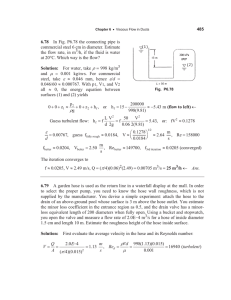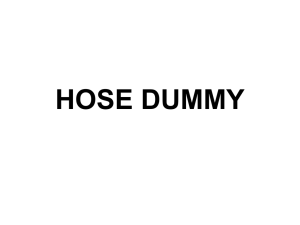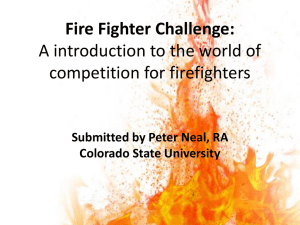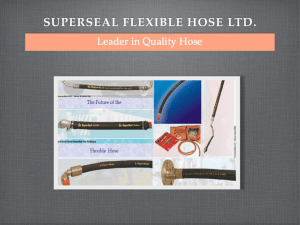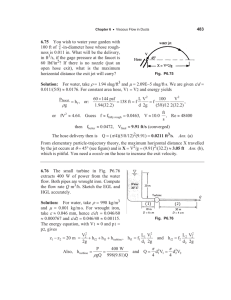College of San Mateo Official Course Outline COURSE ID: Units:
advertisement
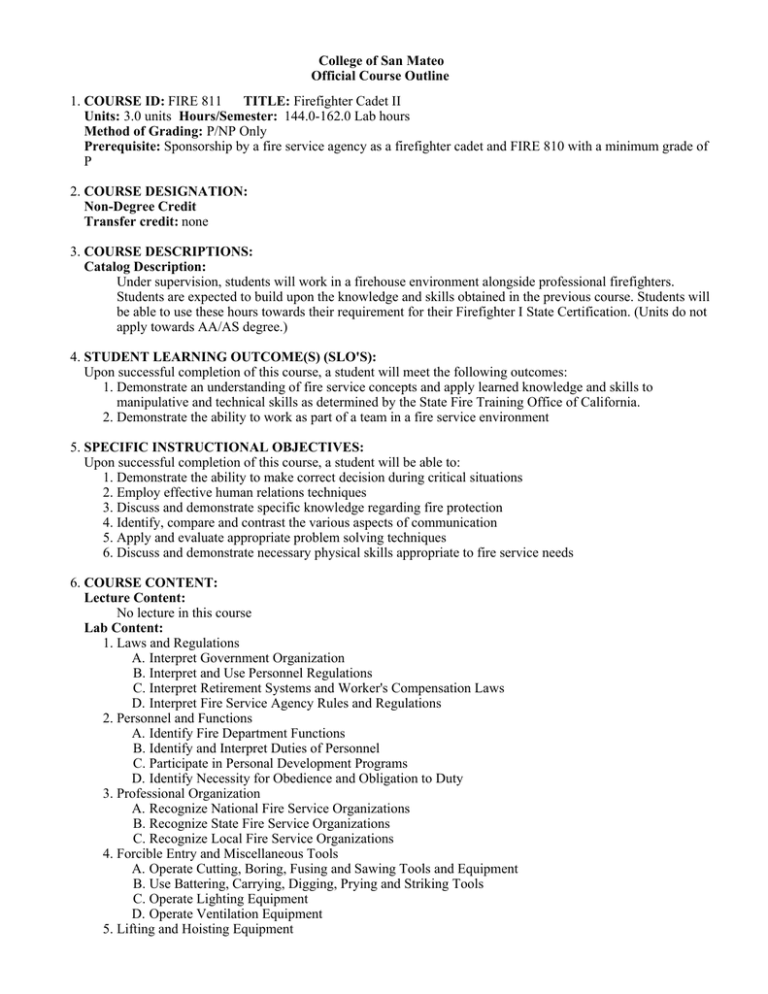
College of San Mateo Official Course Outline 1. COURSE ID: FIRE 811 TITLE: Firefighter Cadet II Units: 3.0 units Hours/Semester: 144.0-162.0 Lab hours Method of Grading: P/NP Only Prerequisite: Sponsorship by a fire service agency as a firefighter cadet and FIRE 810 with a minimum grade of P 2. COURSE DESIGNATION: Non-Degree Credit Transfer credit: none 3. COURSE DESCRIPTIONS: Catalog Description: Under supervision, students will work in a firehouse environment alongside professional firefighters. Students are expected to build upon the knowledge and skills obtained in the previous course. Students will be able to use these hours towards their requirement for their Firefighter I State Certification. (Units do not apply towards AA/AS degree.) 4. STUDENT LEARNING OUTCOME(S) (SLO'S): Upon successful completion of this course, a student will meet the following outcomes: 1. Demonstrate an understanding of fire service concepts and apply learned knowledge and skills to manipulative and technical skills as determined by the State Fire Training Office of California. 2. Demonstrate the ability to work as part of a team in a fire service environment 5. SPECIFIC INSTRUCTIONAL OBJECTIVES: Upon successful completion of this course, a student will be able to: 1. Demonstrate the ability to make correct decision during critical situations 2. Employ effective human relations techniques 3. Discuss and demonstrate specific knowledge regarding fire protection 4. Identify, compare and contrast the various aspects of communication 5. Apply and evaluate appropriate problem solving techniques 6. Discuss and demonstrate necessary physical skills appropriate to fire service needs 6. COURSE CONTENT: Lecture Content: No lecture in this course Lab Content: 1. Laws and Regulations A. Interpret Government Organization B. Interpret and Use Personnel Regulations C. Interpret Retirement Systems and Worker's Compensation Laws D. Interpret Fire Service Agency Rules and Regulations 2. Personnel and Functions A. Identify Fire Department Functions B. Identify and Interpret Duties of Personnel C. Participate in Personal Development Programs D. Identify Necessity for Obedience and Obligation to Duty 3. Professional Organization A. Recognize National Fire Service Organizations B. Recognize State Fire Service Organizations C. Recognize Local Fire Service Organizations 4. Forcible Entry and Miscellaneous Tools A. Operate Cutting, Boring, Fusing and Sawing Tools and Equipment B. Use Battering, Carrying, Digging, Prying and Striking Tools C. Operate Lighting Equipment D. Operate Ventilation Equipment 5. Lifting and Hoisting Equipment A. Use Ropes, Knots and Hitches A. Use Ropes, Knots and Hitches B. Operate Lifting and Spreading Equipment C. Operate Hoisting and Pulling Equipment 6. Extinguishers, Generators and Proportioners A. Operate Portable Fire Extinguishers B. Operate Foam and Water-additive Proportioners and Generators 7. Hose, Nozzles and Fittings A. Couple Hose B. Roll, Fold, Carry, Reel and Unreel Hose C. Connect and Operate Nozzles, Valves, Fittings and other Hose Devices D. Siamese and Wye Lines of Hose E. Extend and Reduce Hoselines F. Load Hose on Apparatus 8. Hose Evolutions A. Operate Hydrants B. Lay Single Line of Hose C. Lay Multiple Lines of Hose D. Connect Hoselines to Auxiliary Appliances E. Operate Master Stream Appliances F. Lay and Operate Hoselines Above and Below Street Level 9. Ladders A. Carry, Raise and Lower Ladders B. Climb, Lock-In, On and Foot Ladders C. Use Ladders as Improvised Equipment 10. Building Equipment A. Operate elevators (optional) B. Operate Fire Protection Systems C. Operate Fire Escape Ladders (optional) 11. Fire Service Hydraulics A. Determine Range and Reaction of Fire Streams 12. Rescue Tools and Equipment A. Use Breathing Apparatus B. Use Life Lines and Belts (optional) C. Use Personal Protective Clothing and Equipment 13. Fire Behavior A. Identify Classes of Fire B. Identify Theory and Fundamentals of Extinguishment C. Identify Products of Combustion D. Identify Hazardous and Explosive Materials E. Identify the Effects of Extinguishing Agent Application F. Identify Theory and Fundamentals of Combustion G. Identify Theory and Fundamentals of Heat Transfer H. Identify Fire Characteristics of Ordinary Combustible Solids I. Identify Fire Characteristics of Flammable Liquids and Gases 14. Strategy A. Describe Size-Up B. Describe Rescue Techniques C. Describe Exposure Tactics D. Describe Ventilation Methods E. Describe Methods to Confine Fires F. Describe Extinguishing Methods G. Describe Overhaul Methods H. Describe Salvage Operations I. Describe Pre-Incident Plans 15. Fireground Operations A. Control Traffic B. Describe Mutual Aid Plans C. Describe Disaster Plans D. Determine Origin and Cause of Fire E. Identify Fires, Methods and Motives 16. Driving A. Operate communications Equipment 7. REPRESENTATIVE METHODS OF INSTRUCTION: Typical methods of instruction may include: A. Other (Specify): Students will function as part of a fire crew during their assigned shift. 8. REPRESENTATIVE ASSIGNMENTS Representative assignments in this course may include, but are not limited to the following: Writing Assignments: Written report of experience, duties and responsibilities in the firehouse To be Arranged Assignments: Periodic in-person progress reports with instructor 9. REPRESENTATIVE METHODS OF EVALUATION Representative methods of evaluation may include: A. Class Participation B. Class Performance C. Papers 10. REPRESENTATIVE TEXT(S): Other: A. None - no lecture. Students will be working in firehouse. Origination Date: September 2014 Curriculum Committee Approval Date: October 2014 Effective Term: Fall 2015 Course Originator: Michelle Schneider
